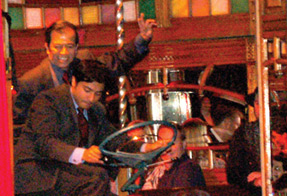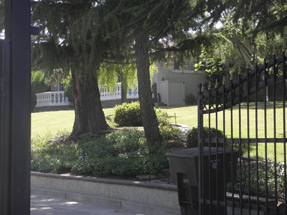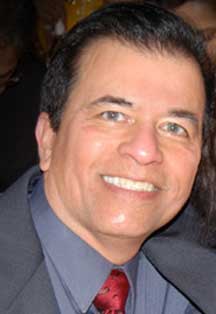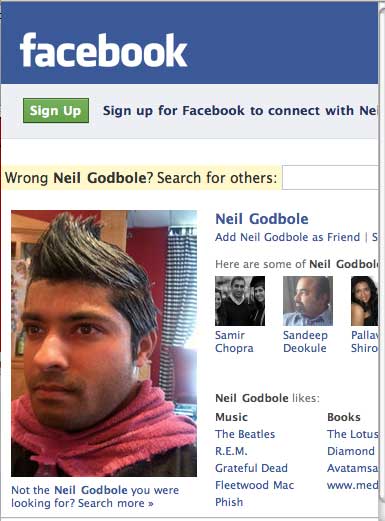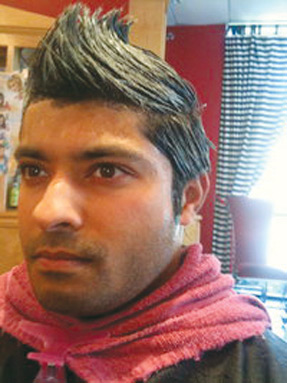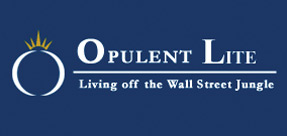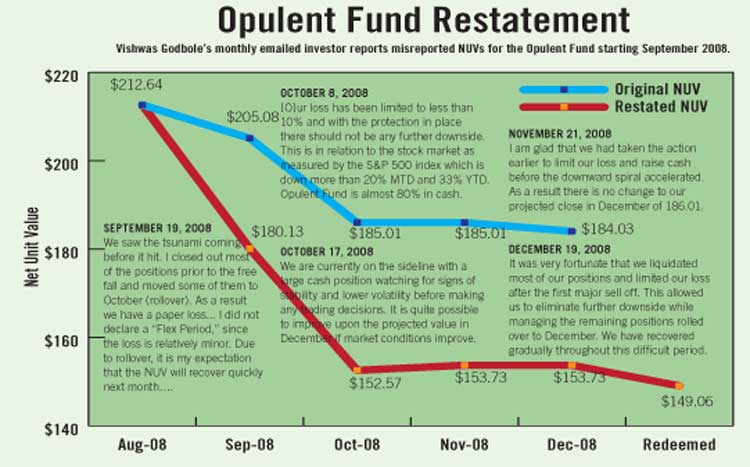Business
Opulent Loss
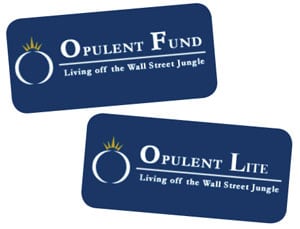
As two Bay Area hedge funds melt down, nearly 100 Indian investors sue former Navin Mail CEO & Founder Vishwas Godbole and his children for orchestrating a $20 million fraud.
| On the afternoon of Dec. 31, 2008, hours before year-end closing time, Vishwas Godbole and his son Neil Godbole, managers of two separate hedge funds, went to branches of their broker Charles Schwab in Silicon Valley and deposited paper checks for $6.5 million each in the other’s fund.
Nearly 100 investors, mostly Indian technology professionals in the San Francisco Bay Area, are now suing the two funds — Opulent, managed by the father, and Opulent Lite, managed by the son and his sister Nina Kulick — charging that the year-end cross investments, as well as a $6 million loan by Opulent Fund to Opulent Lite earlier that month, were designed to inflate fund values to cover up a $20 million shortfall concealed from investors in the two funds over several months.
The investor lawsuit alleges: “Vishwas Godbole and Neil Godbole knew that the checks would clear on or after January 2, 2009 (January 1, 2009 being a bank holiday), as a result temporarily inflating both fund values, and covering up losses that the funds had sustained and defendants hidden from the plaintiff investors.” Jahan Raissi, of the Law Firm of Shartsis Friese, attorney for the two funds and their managers, denied that there was anything sinister about the year-end cross investments or the use of paper checks instead of electronic transfers, which would have been credited and debited in the accounts concurrently. “The purpose of the loan,” Raissi said, “was to secure a higher interest rate on a portion of cash that was unused by Opulent Fund, but that could be used by Opulent Lite.” According to Ramesh Sarva, a CPA with a private accounting practice in Forest Hills, N.Y., who was hired by the funds to review account restatements, Opulent Lite needed the loan to cover outstanding liabilities and margin calls and paid it back after two months with interest. The cross investment, Raissi said, “allowed each fund to diversify and share in the return of the other fund.” Barry Jay Epstein, partner at the Chicago-based accounting firm of Russell Novak, and co-author of Wiley’s GAAP 2010: Interpretation and Application of Generally Accepted Accounting Principles, one of the most authoritative texts on GAAP, says the allegation of moving money between the funds — what is known in accounting circles as kiting — is the most serious investor charge. Epstein, who reviewed the plaintiff’s pleadings in the lawsuit at Little India’s request, said: “They seem to be accounting for money in both places at the same time, playing the float while the check is in transit.” He said that if this was a deliberate strategy and the funds normally used electronic transfers, but used checks timed perfectly at the end of the year on this occasion, it would be “definitely kiting, that would be clear-cut fraud.” Auditors, Epstein said, pay close attention to year-end and cut-off day transactions, “Dec. 31 is not just coincidence,” adding that other corroborating actions make it “fully obvious that this was not just an oversight or a mistake. It is overwhelming evidence that it was deliberate, not just error.” As it turned out, the year-end transactions raised enough flags at Schwab that it dropped the two funds “due to questions about the valuation of the Funds and recent transactions between the Funds’ accounts at Schwab,” according to a Jan. 15, 2009, letter from Schwab Vice President Brian McDonald to investors in the funds. Neil Godbole, investment advisor to Opulent Lite, whose general partner is his sister Nina Kulick, wrote to investors in a separate email on the same day, “We were told that they [Schwab] felt as though this transfer of funds could be seen as a way to increase our year end valuation.” Epstein said, “The Schwab action in suspending the accounts shows they perceived fraudulent behavior, a deliberate kiting attempt, not just sloppy accounting.” The suspension of the funds by Schwab generated considerable investor unease and heightened scrutiny. Within three weeks, the Opulent Fund lowered its valuation by 20 percent and Opulent Lite by 51 percent, setting off an investor run on both funds. By early February, Opulent Lite had liquidated entirely and the Opulent Fund had shriveled to a quarter of its size as panicked investors redeemed their accounts feverishly. According to one investor, “We were signing and faxing redeeming forms until 3 a.m. or 4 a.m. from Vishwas’ office that February night.”
The investors, who collectively lost over $20 million, filed suit in the San Francisco Superior Court in September 2009, accusing the funds and members of the Godbole family, of orchestrating “a systematic and organized family scheme,” as well as fraud, concealment, negligence and elder abuse. The partnership agreement includes an arbitration clause and so the claims are presently under arbitration. The swiftness and bitterness with which the two funds unraveled offers a window to the financial meltdown in the third quarter of 2008, which wreaked havoc on the global financial sector. Douglas Carpenter, a CPA, whose firm hedgefundtruth.com provides due diligence services to hedge fund investors and also consults on administrative and compliance issues with hedge funds, said these funds sometimes suffer catastrophic losses. “The bottom line is, it’s not illegal to lose money. It’s illegal to hide those losses, it’s illegal not to be upfront about it. If you are hiding these losses, it’s illegal, it’s fraud.” Monthly emails by Neil and Vishwas Godbole around the period they suffered the devastating losses offer almost cocky assurances to investors on how well the funds were standing up against the economic storms that were bringing some of America’s most prominent financial institutions, such as Lehman Brothers and Goldman Sachs, to their knees (see Opulent Gulf sidebar). Both funds announced booming results only months before collapse. On Aug 15, 2008, Vishwas Godbole reported to Opulent Fund investors: “While the S&P 500 index is lower by over 11.5% year to date, Opulent Fund is now at its all time high.” Almost concurrently, Neil Godbole wrote to Opulent Lite investors on Aug. 17, 2008: “Previous monthly updates projected an August all time high for Opulent Lite. However, after our conservative stance resulting in a sideways movement for last month, our projection has been moved back by a month.” Opulent Lite reported a NUV (Net Unit Value) of $145.31 in August. In truth, however, its NUV had already plummeted to $87.20 six months earlier in February 2008, according to restated statements sent to investors in February 2009. At the time, however, the fund reported a February 2008 NUV of $135.12. When the fund was liquidated in February 2009, Opulent Lite investors lost almost half the value reported to them in December 2008 and 55 percent from the fund’s peak, announced one year earlier. The Opulent Fund also communicated inaccurate NUVs to its investors beginning September 2008, the month immediately following its all-time high. In an email on Feb. 6, 2009, Vishwas Godbole wrote: “I discovered a major accounting error for the September accounting period. The actual loss for the month of September is larger than previously reported and the mark to market NUV at the end of September is now 180.03 instead of the previously reported 205.08.” He attributed the error to incorrect mark to market values of open positions, which carried over through year end, lowering the December NUV to $152.57 from $184.03: “I am devastated with this discovery. This has never happened to me in the last seven years of managing our fund and reporting values and I took pride in being very accurate and thorough.”
The investor lawsuit, however, asserts that the “opulent defendants willfully, intentionally and knowingly falsified” the financial statements, monthly financial reports and investment reports. It also accuses the Godboles of “unjust enrichment,” by “collecting improper management fees based upon inaccurate investment figures,” and of redeeming their personal investments at “inflated values.” Several investors also filed complaints against the funds with the Securities and Exchange Commission (SEC). John Heine, of the SEC Office of Public Affairs, said the agency does not comment on whether or not it is conducting an investigation. Several investors told Little India, however, that they had been interviewed by SEC investigators. The funds’ attorney Raissi declined to comment on any SEC probes of the funds. Vishwas Godbole defended himself vigorously in a lengthy off-the-record session with a Little India reporter who surprised him at his home, but declined to respond on the record to the allegations in the lawsuit or be photographed under “legal advice.” Emphatically tapping a conference table with his forefinger, he asserted, for the record, however: “No one in the Godbole family benefited one penny from the funds other than what we received in management fees. All the losses in the fund are trading losses.” Suneel Kelkar, a childhood friend and IIT Bombay classmate of Godbole, said investors were wrong to blame the manager for the losses. He said the investors panicked with the saturated media coverage about financial scams involving Bernie Madoff around the same time, but regarding Opulent, “I do not believe there was any fraud or malicious intention to cheat anyone.” He pointed out, “My investments in the stock market and real estate have done far worse than my investment in Opulent.” He is sticking with the fund as are over 20 other investors with nearly $12 million in assets, he says, because of “Vishwas’s integrity and honesty,” noting that Godbole had agreed to cover the costs of litigation personally, even though he had the right to charge it to the fund. All in the Family Before they crashed spectacularly and ended up mired in litigation, both hedge funds were operating as one happy family — literally.
The Opulent Fund was launched in March 2003 by Vishwas Godbole, an electrical engineer turned entrepreneur and 1968 graduate of the Indian Institute of Technology, Bombay. He holds a 1983 patent for a system combining voice and data and another 1991 patent for a method for receiving facsimile and data modem calls on a single telephone line. In 1999, Godbole launched Navin Mail, which offered voice telephony, prepaid cards and messaging services. The venture attracted prominent investors, such as Hotmail’s Sabeer Bhatia and Cirrus Logic’s Suhas Patil, but fizzled out during the dotcom bust at the start of the decade. The Opulent Fund, which began with $1.5 million in investment from just nine investors, mostly Godbole’s close friends, according to SEC records, grew rapidly to $25 million and 70 investors by May 2005, attracting scores of Indian techies, including many IITians and Maharashatrians in the Bay Area, where Godbole was active in community circles and as a music composer. In October 2004, Godbole launched a second fund, Opulent Lite, which investors allege was designed to circumvent SEC’s 100 investor limit on hedge funds, which are exempt from many of its reporting rules. However, Godbole’s attorney Raissi claimed that Opulent Lite was geared toward second generation Indians with a lower net worth and investment threshold than the Opulent Fund. Timothy W. Mungovan, a partner at Nixon Peabody, a Global 100 law firm, said it is not uncommon for managers to have several, “even a dozen,” separate funds. Epstein said that creating a second hedge fund to evade the rule of 99 is “not their biggest problem.” It may have enabled them to evade oversight and it may demonstrate a loophole in the law, Epstein said, but “I am not sure if there are any legal consequences” for their actions. Vishwas’ son Neil Godbole and his investment firm Trueblue Strategies were appointed investment managers and advisors of Opulent Lite in December 2005. By this time, Opulent Lite had already packed in 56 investors and $8.32 million in assets into the new fund, according to SEC records. Godbole transferred general partner control of the Opulent Lite fund to his daughter Nina Kulick, an artist and designer, who runs an online store Gooseberrypress.com, which markets eco friendly city totes, baby gear and paper products. The website says: “She loves vintage fabric & ribbon, funky color combinations and is crazy about pattern. Most days you can find her in the studio trying to get some work done, staring at fabric swatches and ‘coloring’ in Adobe Photoshop as she pleads with her cat Jules to ‘stop helping’ and get off of the keyboard.”
Investors in both funds reported few, if any, interactions with Kulick, even though she was the general partner of Opulent Lite and investment manager of Opulent. SEC records show that both father and son registered as investment advisor representatives in 2005. Kulick is not registered with the SEC. Opulent Lite investors say that although Neil Godbole conducted all formal communications with them, they assumed that his father Vishwas actually exercised control of the fund. They pointed out that meetings of the two funds were held jointly and Vishwas Godbole often fielded their questions relating to Opulent Lite. However, Raissi denied that Vishwas Godbole had any role in Opulent Lite, explaining any comments he made to investors “related to tax and regulatory matters, which was his area of expertise.” He added: “In early 2005, Vishwas informed the investors of Opulent Lite that a succession in management will take place. In late 2005 the succession took place with Neil serving as the investment manager….. Investors in Opulent Lite were informed of the succession and were given the opportunity to withdraw from the fund if they did not want to continue with the change in management.” Neil Godbole, Raissi insists, was sole manager of Opulent Lite since 2005. “He took all the decisions. He put together the reporting. He pushed the send to emails to people, so for Opulent Lite there is nobody else to have any responsibility, so it is all Neil’s for good or bad. No one can run away from that fact.” The investor lawsuit claims that Kulick’s husband Aaron Kulick, a software engineer who is listed as “web dude” at Gooseberry Press, “was responsible” for the two funds’ online systems and accounting software, which “mysterious (sic) crashed and ‘went down’” when the “fraud in the funds was discovered.” It alleges: “When the systems came back online, documents and statements that were previously online mysteriously disappeared and new doctored ones appeared in their place. Aaron Kulick aided and abetted the family scheme to defraud the investors.” Reached at her Gooseberry Press number, Nina Kulick said she was too busy to answer a reporter’s call at the time and promised to call back later, but never did. Neil Godbole also said he was in the midst of a meeting, but would return the call later in the day to discuss the issues “at length, as these are complex matters that require a fair amount of time.” He did not respond to multiple subsequent follow-up calls and emails over two months. As we went to press, his attorney, Larisa A. Meisenheimer, informed Little India, “We are unfortunately not going be able (sic) to get additional responses to you from Neil in the timeframe you need.”
The funds, which jointly peaked at almost $100 million in 2007, operated out of Vishwas Godbole’s home and, according to several investors, had no outside employees. The funds reported monthly NUVs to their investors by email, who could also monitor their investments on a website. Neither fund had external administrators or independent auditors, which are not required of exempt hedge funds. Hedgefundtruth.com’s Carpenter said he found it “unbelievable” and “inconceivable” that funds of Opulent’s size did not have an auditor, adding that it was also “unusual” for them not to have an external administrator. He said that administrators are common at funds of $500,000 on up in assets and auditors at $10 million or larger funds. Charles Schwab Imprimatur? The Godboles hosted the investors, first monthly and later every quarter, at catered social events that also doubled as investor meetings at their sprawling estate with a backyard pool, perched at the end of a cul de sac in Saratoga, Calif. Godbole declined to allow Little India to photograph his home.
The investor lawsuit, which also targets the funds broker-dealer Charles Schwab, alleges that Rodney Banh, a vice president at Schwab, frequently attended these business-cum-social events and affirmed the funds’ balances, lending “an air of credibility to the fraudulent scheme” and “instilling a false sense of security” among investors. Occasionally the funds would raffle prizes to investors, which, according to the lawsuit, were gifted by Schwab and handed out by Banh. Vishwas Godbole announced one such raffle in an email on March 1, 2008: “Charles Schwab & Co. is offering a ski package giveaway to one lucky Opulent member to celebrate the great ski season we are having this year!” Many investors in the fund were savvy technology and financial professionals, some even holding financial positions in major U.S. companies and atleast one had a hedge fund of his own. They said they were reassured by the presence of so many Godbole family members and friends in the fund and the fact that Vishwas was a reputed technology professional and active in the social and community scene. Several investors said Schwab’s imprimatur, reflected by the frequent presence of Banh at Opulent meetings, caused them to lower their guard. “Some of our wives were more skeptical, saying we are too trusting of what is going on,” one investor said. However, Sarah Bulgatz, director of Schwab’s corporate public relations, in a statement to Little India, said: “Schwab merely custodied the (Opulent) assets and, as custodian, had no obligation to attest to the accuracy of the unit valuations of these private placements or to monitor fund performance. All trading by the Funds was self-directed; Schwab didn’t provide any investment advice. The entity that administered and promoted the funds is no longer a Schwab client, and the assets are no longer custodied at Schwab.” She denied the allegations in the lawsuit against their trader: “Mr. Banh’s conduct was at all times strictly in keeping with Schwab’s limited role as custodian of the fund assets.” Lethal Rollovers Both funds were set up to trade in index options in a narrow band and liquidated all positions on the third Friday of the month, so the funds were entirely in cash every month. Their problems seem to be rooted in their decision to rollover options in 2008 when the stock market was gyrating uncontrollably and the option positions were running at a loss. Opulent Fund revised its partnership agreement in July 2008 to allow rollover of options for up to three months and implemented its first rollover in September 2008. Vishwas Godbole wrote to investors: “We saw the tsunami coming before it hit. I closed out most of the positions prior to the free fall and moved some of them to October (rollover). As a result we have a paper loss and the current NUV is 205.08 (-3.6%) below our last month close of the all time high of 212.64.” In fact, the NUV that month was 180.03, according to Opulent’s restated reports. Opulent Lite began implementing rollovers in January 2008, at least 8 months before it secured investors approval for them. In February, Neil Godbole reported a “a more conservative month” and an increase in NUV to $135.12 in his monthly investor report to investors, adding “As for February, I decided to play the month more safely so our return, while still on the higher side, is not whole-sale recovery from January just yet.” In truth, the fund hit rock bottom at $87.20 that month. For the next 10 months, Neil Godbole’s monthly investor emails reported NUVs that were 26 percent to 80 percent higher than the values the fund restated to investors in February 2009 (See Opulent Gulf sidebar). He explained the losses in an email on Feb 21, 2009: “In January and February of 2008 we had substantial losses in the fund. Instead of realizing these losses, I opened up a schedule of rollovers to bring back the money over the course of the year.” He said he began projecting the NUVs from February onwards and “my schedule of rollovers and projected values was working and tracking correctly until September.” But the market crash in September caused open options to explode and the fund never recovered. “I had never done rollovers previously, and I sincerely wish I had never gotten into doing them this year (or ever). It really messed up the fund accounting. What I should have done was state the exact situation with these rollovers more clearly, disallow redemptions at the projected prices, and communicate the potential hazard with this type of trading and subsequently projected values for open options.”
Raissi insisted that all the losses the funds experienced resulted from trading, computational errors or miscalculations in marking values of open options, which are difficult to price, especially if they are complex dependent options of the type the two funds traded in. Epstein, however, rejects the contention that options, even dependent ones, are difficult to price: “There is an option pricing market. Options are created in the marketplace and the market has a way to price options.” Carpenter said any discrepancies in asset values have to be properly accounted for. “There needs to be a documented methodology as to what they did to determine the price. It needs to be consistently applied, and it needs to be logical and reasonable — and documented in writing.” Little India reviewed an Opulent Lite worksheet an investor downloaded from the fund’s website before the restatements, which showed NUV errors deriving throughout 2008 from lower total units, not asset values. The worksheet showed almost 86,000 (44 percent) fewer units in the fund at the end of the year than were restated, but with $13.9 million in assets. Raissi said Neil Godbole had no explanation for the worksheet, but assumed that an investor downloaded it while it was still being worked on by someone. He provided another worksheet purporting to show the inaccurate NUVs, which were derived from wrong net asset values but correct unit totals. Remarkably, both worksheets yielded precisely the same inaccurate NUVs to the second decimal point throughout 2008. Sarva, who claims he was retained by the funds to undertake a “limited” securities audit, “not an accounting audit or tax audit,” says he has verified that the final NUVs were accurate, that all investors were redeemed fully and that the general partners neither withdrew their own investments at a higher valuation nor received any compensation beyond the management fees to which they were entitled. “Any additional fees they received because of inaccurate NUVs earlier were refunded to the fund,” he said. Sarva said his role was limited to verifying the final values, but regardless of the motives or how the original NUVs were calculated, “no matter what they did, even if there was any hanky panky, nobody got financial benefit from that, as you are paid only by your NUV and the final NUV was accurately reported.” Adds Raissi: “So there was a mistake, but that doesn’t mean that anyone gets their money back, because you were in the fund and it lost money. And it lost money whether it was reported 100% accurate the first time or not…. it’s not like the money went to a Swiss bank account or anything like that.” However, Epstein countered that sloppiness in accounting cannot be excused so easily: “NUVs are what investors are going by. It is nonsense to say that is from sloppiness. If all errors overstate in the same direction, that is not random. That’s not chance. That’s concealment, that’s deliberate.” Jaissi insists: “The money was lost in the market, it was ordinary trading, which is exactly the risk that all the investors signed up for when they invested in those funds and read the offering document, the disclosures, and signed the subscription documents. So the fact that there was an error in reporting doesn’t change the fact that they were just market losses, the investors understood it could happen.” However, Epstein said the defense that the managers are protected because all the losses are trade related, even if improperly reported earlier, is not enough. “If you had told me the truth earlier, I would have taken action to mitigate the losses. I relied on the information you provided to buy or sell or continue to stay,” Epstein said. “The plaintiffs need to go back to the first date they were lied to … the earliest point of time they were given fabricated information for their claims.”
Related Materials on Opulent & Opulent Lite Investor Complaint in San Francisco Superior Court Monthly Reports from Opulent Fund August 2008-December 2008 Vishwas Godbole on Opulent Restatements Opulent Lite Restatements Investor File of Opulent Lite Original Statement Neil Godbole File of Opulent Lite Original Statement |

